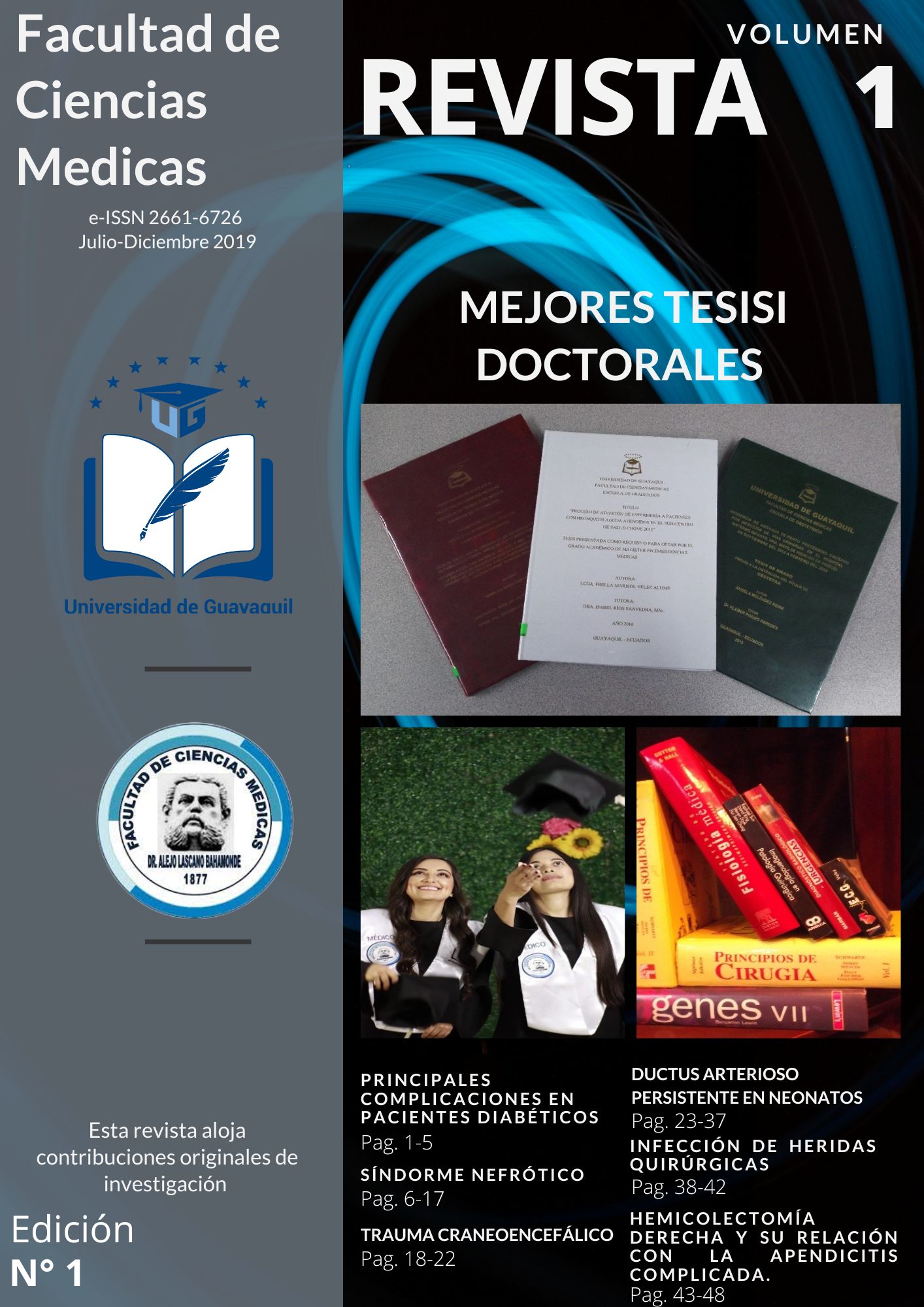Craniocerebral trauma caused by motorcycle traffic accidents between the ages of 18 and 30 who were admitted to the Abel Gilbert Pontón hospital 2017-2019
Keywords:
Traumatic brain injury, Glasgow scale, traffic accident, consequencesAbstract
Craniocerebral trauma represents a big problem in our environment, that has infinite causes, but the one that occurs in a greater proportion is that caused by traffic accidents, that is why the present investigation is carried out with the objective of determining the epidemiological characteristics and the main consequence of the cranioencephalic trauma caused in traffic accidents by motorcycles in the ages of 18 to 30 years.
This research is quantitative in approach, descriptive, cross and for its realization, data is taken from medical records provided by the Abel Gilbert Pontón hospital with a sample of 148 patients who presented traumatic brain injury of which 88 patients presented traumatic brain injury due to motorcycle accident.
References
Charry JD, Cáceres JF, Salazar AC, López LP, Solano JP. Trauma craneoencefálico . Revisión de la literatura. 2017;(c):177– 82.
Cruz López AM, Ugalde Valladolid A, Aparicio Ambriz CA, Contreras Landeros LY, Carnalla Cortes M, Choreño Parra JA, et al. Abordaje del paciente con traumatismo craneoencefálico: un enfoque para el médico de primer contacto. Atención Fam. 2018;26(1):28.
Giner J, Mesa Galán L, Yus Teruel S, Guallar Espallargas MC, Pérez López C, Isla Guerrero A, et al. Traumatic brain injury in the new millennium: A new population and new management. Neurologia [Internet]. 2019; Available from: https://doi.org/10.1016/j.nrl.2019.03.012
Bernal-pacheco O, Vega-rincón M, Hernández-preciado MDJF. Consecuencias neuropsiquiátricas del trauma craneoencefálico. 2009;
INEC (INSTITUTO NACIONAL DE ESTADÍSTICAS Y CENSOS). El número de accidentes de tránsito en Ecuador se redujo en un 15,2% en el 2016 | [Internet]. 2017 [cited 2020 Jun 5]. Available from: https://www.ecuadorencifras.gob.ec/el-numero-de-accidentes-de-transito-en-ecuador-se-redujo-en-un-152-en-el-2016/
Guzmán F. Fisiopatología del trauma craneoencefálico. Colomb Med. 2008;39(3 SUPPL.):78–84.
Flores MM. Doctrina de Monro-Kellie. 2019;(60):2018–9.
James Wilberger; Gordon Mao. Traumatismo encefalocraneano (TEC) - Lesiones y envenenamientos - Manual MSD versión para profesionales [Internet]. Traumatismo encefalocraneano (TEC). 2017 [cited 2020 Mar 8]. Available from: https://www.msdmanuals.com/es-cr/professional/lesiones-y-envenenamientos/traumatismos-de-cráneo-tc/traumatismo-encefalocraneano-tec#v1111113_es
Madrigal Ramírez E, Hernández Calderón C. Generalidades de Trauma Cráneo Encefálico en Medicina Legal. Med Leg Costa Rica. 2017;34(1):147– 56.
Tratamiento Y, Pellegrino FC. Traumatismo craneoencefálico : fisiopatología , monitorización y tratamiento. 2014;(March).
Provincial H, Cl D, Quir N, Jos R, Matanzas PEZT, Rodr E, et al.
El examen físico del paciente con trauma craneal The physical examination of the patient with cranial trauma. Rev Médica Electrónica. 2011;33(4):463–71.
Cruz Benítez L, Ramírez Amezcua FJ. Artículo de revisión Estrategias de diagnóstico y tratamiento para el manejo del traumatismo craneoencefálico en adultos. Trauma. 2007;10(2):46–57.
Mancilla A. Abril-Junio 2010 Utilidad actual de la radiografía simple en el diagnóstico de fracturas de cráneo. An Radiol México [Internet]. 2010;2(Ic):73–5. Available from: http://www.medigraphic.com/pdfs/trauma/tm-2007/tm072e.pdf





